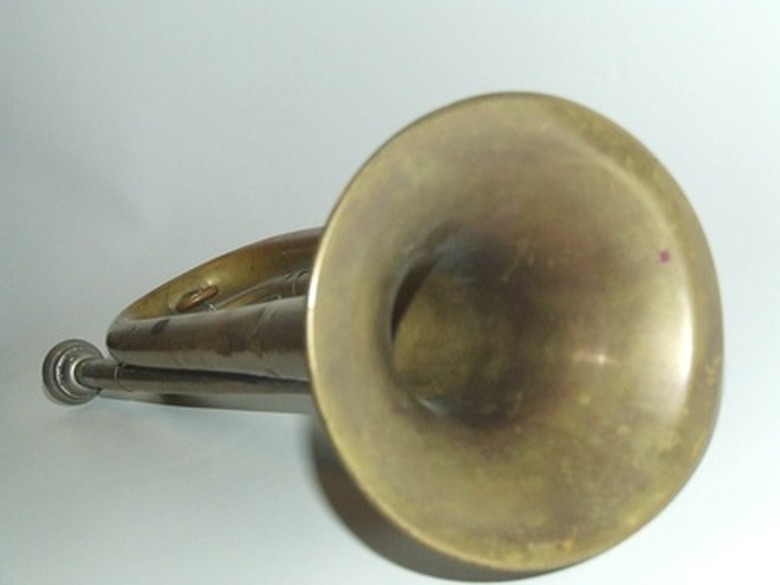How To Find The Percentage Of Copper In A Brass Alloy Assignment
Brass consists of copper and zinc, with the zinc concentration typically ranging from 5 percent to 40 percent. These two metals can be alloyed in various proportions to produce brass with different chemical and physical properties, including hardness and color. Many of the prescribed methods for determining the copper content of brass–such as iodometric titration and spectrophotometric analysis–require expensive equipment and considerable chemical expertise. An alternative method based on density–the ratio of a substance's mass to the volume of space it occupies–requires relatively inexpensive equipment and little mathematical prowess.
Measurements
Step 1
"Zero" the balance by ensuring that it reads zero with no sample in place. Most electronic balances are equipped with a "zero" or "tare" button specifically for this purpose that resets the balance to zero. After you've zeroed the scale, place the brass sample on it and record the mass in grams.
Step 2
Fill the graduated cylinder about half full with water. Measure and record the water level. The cylinder must have an inside diameter large enough to accommodate the sample. If necessary, bend, roll or flatten the brass sample with a hammer until it will fit inside the cylinder.
Step 3
Slide the brass sample down the side of the cylinder into the water, being careful to avoid splashing or spilling any water.
Step 4
Measure and record the new water level.
Calculations
Step 1
Calculate the volume of the brass sample by subtracting the volumes of water before and after the brass was added to the cylinder. For example, if the cylinder initially read 50.5 mL and increased to 61.4 mL when the brass was added, then the volume of the brass sample is (61.4 mL) – (50.5 mL) = 10.9 mL.
Step 2
Determine the density of the brass sample by dividing its mass in grams by it volume in milliliters. Continuing the example from Step 1, if the mass of the brass sample measured 91.6 g, then its density would be (91.6 g) / (10.9 mL) = 8.40 g/mL.
Step 3
Calculate the percent copper by substituting the density of the brass sample in grams per milliliter into the following equation:
Percent copper = (density of brass sample – 7.58) / 0.0136
Continuing the example from Step 2,
Percent copper = (8.40 – 7.58) / 0.0136 = 60.3 percent.
Things Needed
- Graduated cylinder that reads in milliliters
- Balance that reads in grams
- Hammer
- Calculator
TL;DR (Too Long; Didn't Read)
The water in a graduated cylinder will form a U-shape at its surface. This is called a "meniscus" and the proper volume reading is taken from the bottom of the U.
Cite This Article
MLA
Brubaker, Jack. "How To Find The Percentage Of Copper In A Brass Alloy Assignment" sciencing.com, https://www.sciencing.com/percentage-copper-brass-alloy-assignment-6624641/. 24 April 2017.
APA
Brubaker, Jack. (2017, April 24). How To Find The Percentage Of Copper In A Brass Alloy Assignment. sciencing.com. Retrieved from https://www.sciencing.com/percentage-copper-brass-alloy-assignment-6624641/
Chicago
Brubaker, Jack. How To Find The Percentage Of Copper In A Brass Alloy Assignment last modified March 24, 2022. https://www.sciencing.com/percentage-copper-brass-alloy-assignment-6624641/
